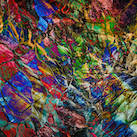Articles
Lara Downes
Haruka Nakamura
Smile Down Upon Us
Albums
Ah! Kosmos
Barreca | Leimer
Bruno Bavota
The Daniel Bennett Group
Biosphere / Deathprod
Mary Elizabeth Bowden
Bruce Brubaker
Magit Cacoon
Cass.
Ben Chatwin
Lara Downes
Elektro Guzzi
Yair Etziony
Graves & Laswell
Alexander Hawkins Trio
Christopher Hipgrave
Dibson T Hoffweiler
How To Cure Our Soul
Konntinent
Kuba Kapsa Ensemble
Lauer
John Metcalfe
Haruka Nakamura
NDR Bigband
Netherworld
Northumbria
Tristan Perich
[.que]
Roomful of Teeth
Martin Scherzinger
Oliver Schories
Sirkis/Bialas Int. Quartet
Smile Down Upon Us
Sunset Graves
Mike Tamburo
Scott Tuma
Western Skies Motel
EPs / Cassettes / DVDs / Mini-Albums / Singles
36
Matthew Daher
Digital
Akira Kosemura
Marso & Gala
Mechanist
The OO-Ray
Orphan Swords
Reece / Doc Scott / Dillinja
Seba

Ben Chatwin: The Sleeper Awakes
Village Green
That Ben Chatwin decided to release The Sleeper Awakes under his birth name rather than his established Talvihorros alias is significant. Such a move by an artist often suggests that the release in question will feature material of a more personal nature, though this doesn't strike me as the case here, given the immediacy with which Talvihorros material connects with the listener. By his own admission, he made the decision to divest himself of whatever baggage had accrued to the Talvihorros name and grant himself a fresh start. To these ears, however, the move signifies in a more dramatic way: in contrast to the guitar-oriented soundscaping style associated with Talvihorros, The Sleeper Awakes not only recasts Ben Chatwin as a multi-instrumentalist but also strongly argues for his talents as an arranger and composer more than soundscaper.
Written and recorded at Chatwin's newly adopted home studio in Scotland, The Sleeper Awakes was inspired, interestingly enough, by the writing of H. G. Wells, specifically, in Chatwin's own words, “the idea of a future that has been and gone. Before the information and telecommunications revolution there was a beautiful yet weird naivety about what the future might bring, and it was this that I tried to tap into whilst making the record.” As a way of evoking that period feel, Chatwin worked into the album material the sound of a 100-year-old Dulcitone, in effect pairing older, traditional instruments like it with modern recording techniques and sounds. Though he's credited with most of the instruments on the album, guests such as William Ryan Fritch (who contributed cello, viola, clarinet, and voice to a couple of tracks), Maarten Vos (cello on “Sirius”), Joel Hanson (hammered dulcimer on “In the Fire”), and Sarah Kemp (violin on “Insomnia”) also appear on the project.
No one should presume, however, based on the preceding that Chatwin's set his guitar aside on The Sleeper Awakes: while Vos's cello figures prominently into the metronomic opener, “Sirius” positions Chatwin's chiming guitar lines front and center as the primary melodic voice, and there's even some fuzz-toned textures billowing in the background to lend the somewhat foreboding setting a strong Talvihorros feel. By comparison, the hypnotic, strings-laced second track “Atoms of Amber” exemplifies a Victorian-styled ambiance that's very much in line with Chatwin's concept for the release, while “Darwinism” similarly distances itself from anything Talvihorros-related in its emphasis on strings and tinkling patterns. The addition of Hanson's hammered dulcimer to “In the Fire” accomplishes much the same thing whilst also expanding the album's soundworld into exotic spaces; the presence of Fritch, an always invaluable contributor, looms large in such a piece, specifically in the orchestral expansiveness of the arrangement. The early and modern eras appear to collide within “Insomnia” when synthesizers appear alongside the swoop of Kemp's violin, and there are moments (e.g., “Mirroring”) when a gothic scent wafts off of the material in a manner that evokes Henry James's The Turn of the Screw as much as Wells's The Shape of Things to Come.
The Sleeper Awakes certainly reflects Chatwin's ongoing maturation and growth as a composer, something that's happened incrementally over the years as opposed to in dramatic leaps and bounds. And despite the fact that each of its concise pieces works as a stand-alone composition, the album holds together as a cohesive whole, due in part to the careful consideration Chatwin's given to track sequencing and the recurring presence of the Dulcitone.
May 2015